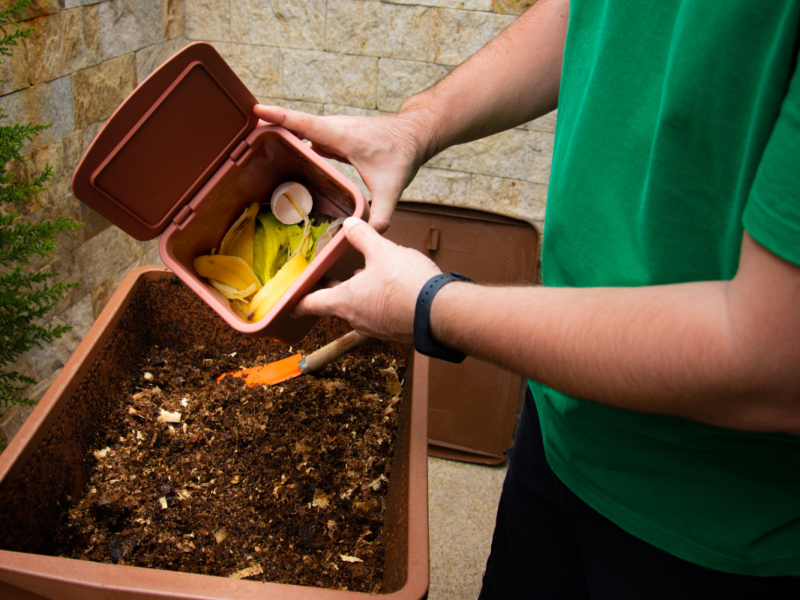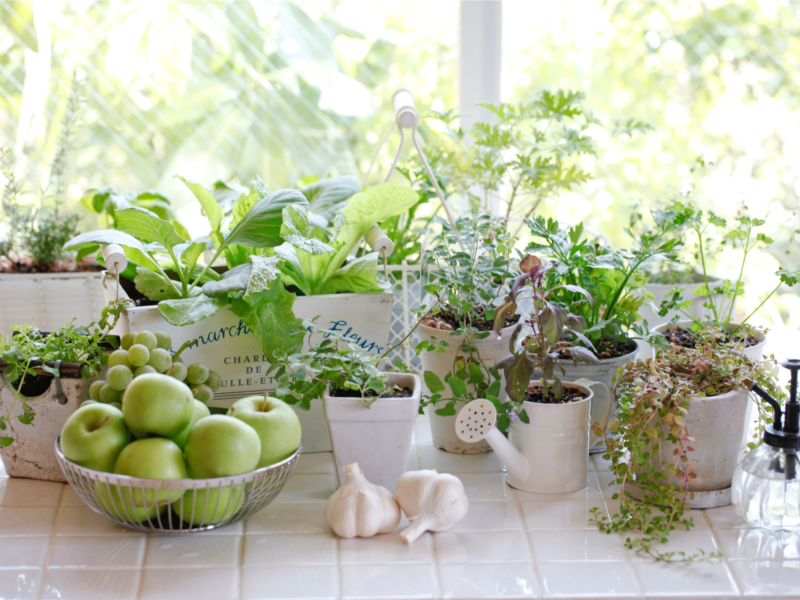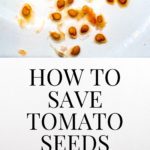Everything you need to know to correctly save tomato seeds from your heirloom tomatoes for next year’s garden!
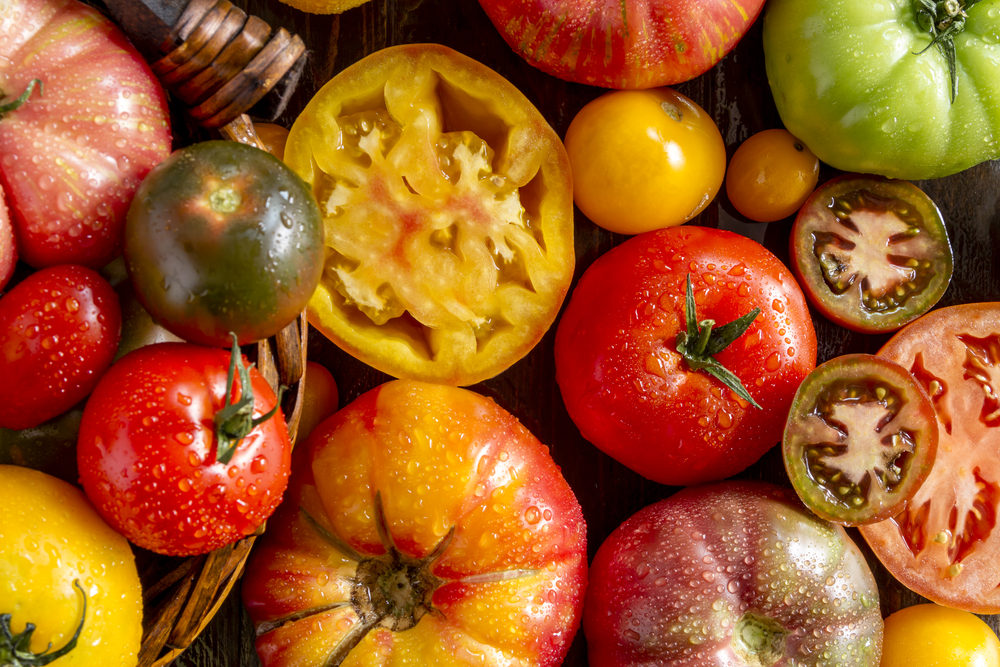
This post teaches you how to correctly save tomato seeds to get a good germination rate next year.
Do you grow tomatoes in your garden every year? If so, you’ll love this way to save tomato seeds from your favorite varieties! It’s easy to do if you know the drill. With these easy steps, you can have fresh tomato seeds for your garden every year!
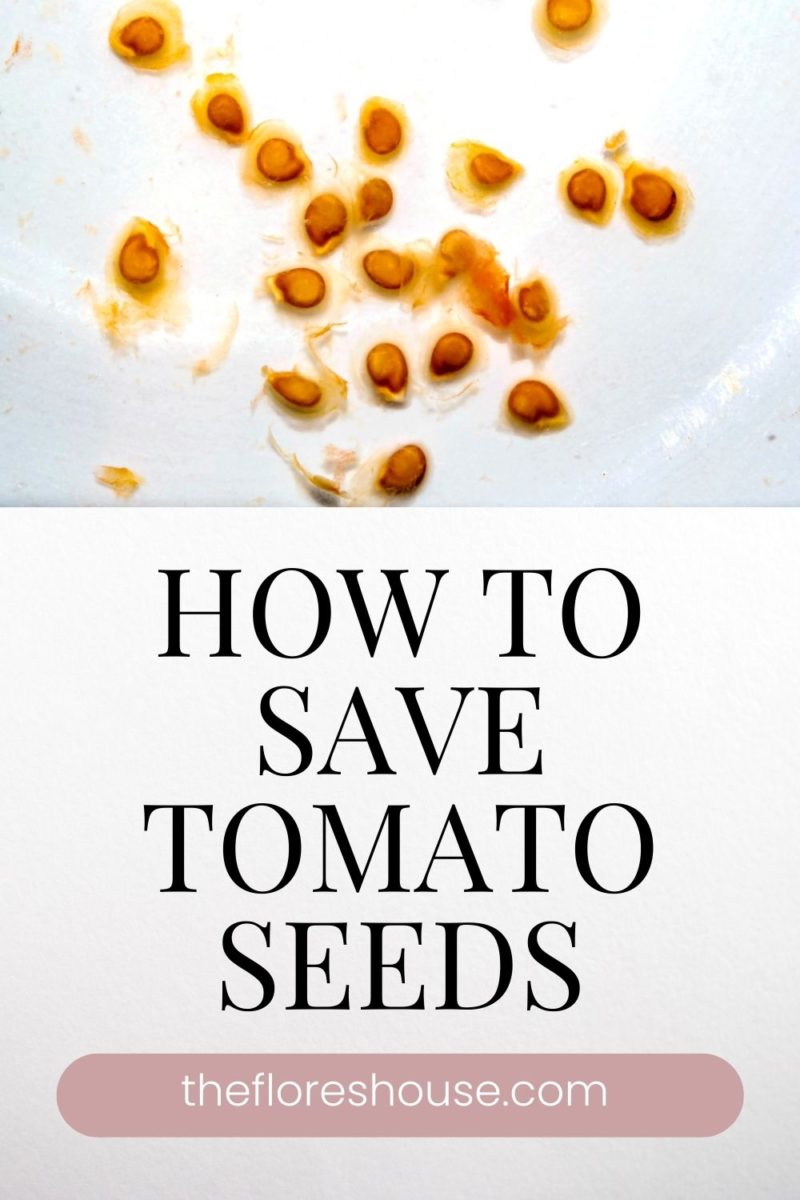
Why save tomato seeds?
Tomatoes are an excellent crop for your first foray into seed saving. Their seeds sprout quickly, and their germination rate is impressive.
In addition, homegrown tomatoes are far superior in taste—and texture—to commercially produced varieties.
Another benefit of growing open-pollinated tomato varieties: you can save their seeds year after year and expect similar results. Read more about saving tomato seeds at home without much effort or expense.
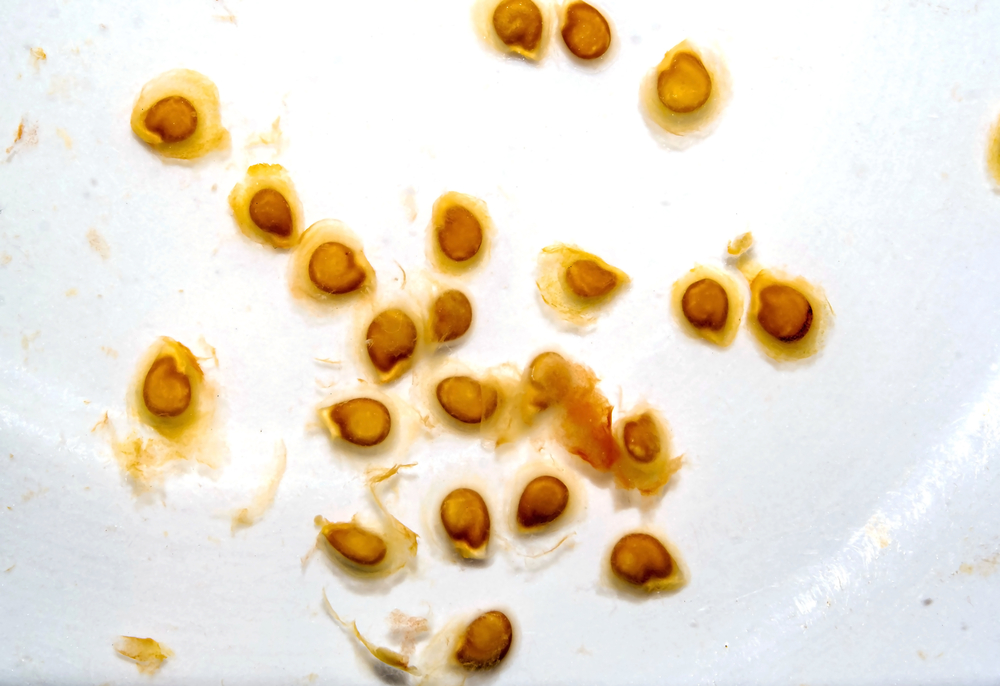
What are heirloom tomatoes?
Heirloom tomatoes are grown from seeds saved from many generations, unlike hybrid tomatoes, which man has modified.
As a result, heirloom varieties generally taste better and have a higher germination rate than hybrids.
An effort is underway in North America to create an official heirloom designation for open-pollinated (non-hybrid) plants. And when you find a really good variety of tomatoes, it is definitely worth saving!
Heirlooms and Hybrid Tomato Seeds
Before we focus on the mechanics of seed saving, note that all seeds collected through open pollination or heirloom varieties produce accurate to their parent plants.
Some hybrid plant plants contain sterile plants that are harvested. The seeds saved in hybrids that grow usually don’t have as many characteristics as the parent tree – illness resistance, fruit size, or quantity of fruit may vary.
For best results, save seeds from open-pollinated cultivars. Find information and advice on tomatoes from this collection.
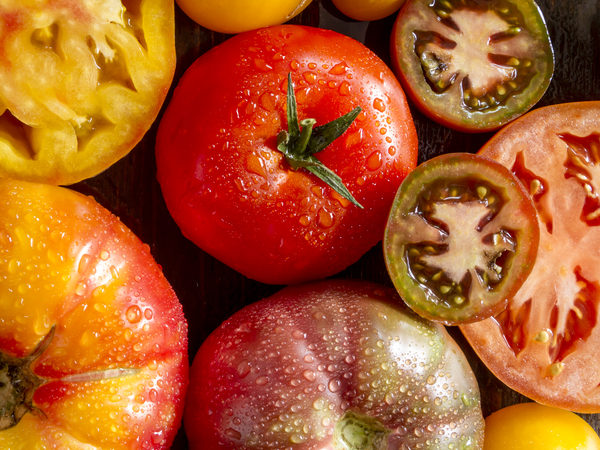
Working With Tomato Seeds
Seeds from numerous crops are saved by simply waiting for roots to dry and opening them to gather sources. Tomatoes take a little more challenging work as these seeds are coated with growth inhibitors, thereby discouraging sprouts from inside tomato seeds.
You must remove the gel coating by letting the fruit ripen or ferment.
First, you must let one of the best tomatoes ripen and fall from the plant. That is the hardest part!
Your goal is to save the seeds of the best fruit for the plants that will develop the genes of the next crop.
Things You Need Before Saving Tomato Seeds
- a glass container or jar with a lid
- paper towels
- fine mesh strainer
- envelope or sealed container to store seeds
- a good and ripe heirloom tomato
For starters, you’ll need to collect a few tomatoes that have fully ripened on your plants (tomatoes with green fruit are bitter).
Allow them to ripen until they are soft, but do not allow them to get overripe. Remove the stem from each tomato.
Place paper towels in the bottom of a container so the paper towels cover them completely.
Layer tomatoes on top of the paper towels, careful not to let any break apart.
Once all the tomatoes are layered inside the container, cover them with another layer of paper towels and seal tightly with a lid or clear wrap.
Store in a cool place away from direct sunlight for three to two months before opening.
Choose your tomatoes wisely for seed-saving.
Step 1: Gather your harvest
It’s simple to collect tomatoes, but some necessary steps are needed to ensure you can propagate your stock correctly.
Choose seeds from heirloom tomato varieties because they are open-pollinated and non-hybrid. This will ensure that the saved seeds will germinate.
Select tomatoes that are full, red, and ripe. Choose fully-ripe, if not over-ripe, fruits and harvest tomatoes that appear healthy and vigorous. Avoid fruit that has cracked skin.
Selecting the most appealing fruit of the most vigorous plant promotes similar traits for future generations.
Step 2: Prepare the Tomato Seeds for Fermentation
First, you will need a glass container with a lid and your best ripe tomatoes.
Next, cut the tomatoes in half and scoop the seeds into a sterilized glass jar. I like to use this type of canning jar with removable inner lids.
Once you have plenty of tomato seeds in the jar, cover it with a paper towel and screw on the lid. This will allow some air to circulate during fermentation.
Set the jar in a warmer spot in the kitchen. It will start to smell bad, so keep that in mind when picking a spot. This step takes 3-4 days.
The fermentation will remove most of their natural acidity, making it easier to release their seeds. Don’t be alarmed if your container begins to smell like rotten tomatoes!
This is entirely normal during step one of saving tomato seeds. When the time has passed, empty the container of its fermented water and discard it.
The “Mortgage Lifter“ heirloom tomato is one of the best-growing varieties we have tried in our zone 8A garden! -Tara
Keep a Close Watch
Step 3: Soak, rinse, and dry those seeds!
Now that you have collected all your fully ripe tomatoes, it’s time to get those seeds out of their casings. The easiest way to do so is with a filter.
Spread your fully ripe tomatoes on a clean dish towel, sprinkle them with a little bit of salt, and let them sit for an hour or two.
After some time has passed, dump all your tomatoes in a colander and rinse them off well with cool water.
How do I save my tomato seeds for next year?
Lay them all out on a paper towel to dry for 24-48 hours. Then you can put them in an airtight container! That’s it. Now you can grow more next year (for free!)
Seeds of tomatoes are always viable, even in a cool place. However, if you want more protection, store them at a not-too-hot temperature when opening jars for condensation and keep holding them until you are warm.
If you have composted leftover tomato seeds, you’ll likely experience a seed from these plants assisting in a volunteer garden. You might see tomato volunteers sprouting from bushes and trees where tomatoes grew last year.
Tomato seeds contain tiny seeds that quickly sprout once a plant reaches the soil’s surface. Instead of waiting on accidental volunteers, saving seeds from tomato fruits is pretty simple.
Collect your best fruits between the end of summer and fall. You will be so glad you did!
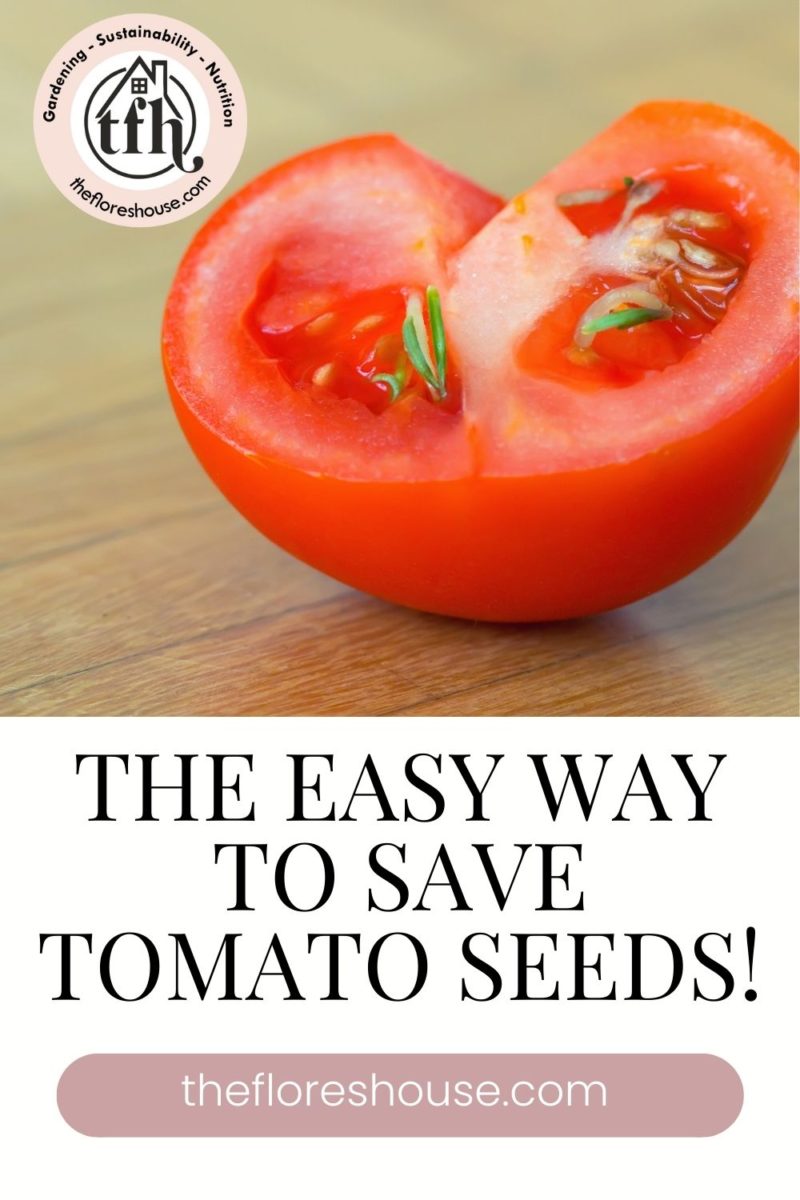
Here are Some Common Issues with Fermenting Tomato Seeds
Since seeds are supposed to be fermented within 1-2 weeks, they can begin to grow mold or get a little stale.
Tomatoes may attract fruit flies. Tiny fruit bugs are attracted to the fermentation of tomato seeds, which can be a nuisance. No need to worry, though.
Mix a tablespoon of apple cider vinegar in a glass with a small amount of dish soap and water to trap the flies.
